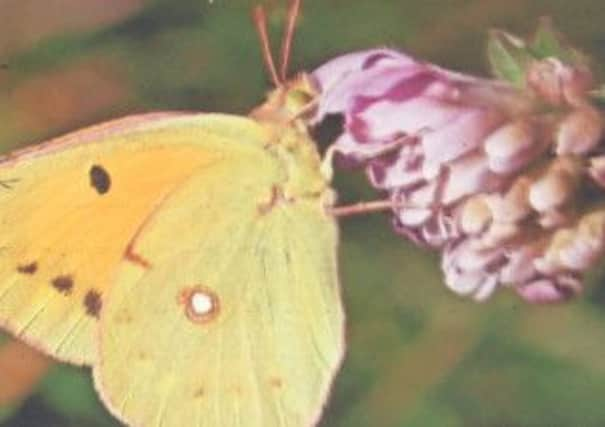Concentration all the way on abutterfly count


Two thousand of us throughout the British Isles make the sample count each week but a lot of them are youngsters and their transects are less than a mile. A doddle. Especially those on flat ground such as the sheepwalks along the North Norfolk coast or the sand dunes of Braunton Burrows in North Devon.
Those of you who know Kingley Vale will remember the steep valley and wonderful views from the summit, across the Chichester plain to the Isle of Wight and eastwards to the Seven Sisters that can occasionally be seen when the setting sun shines upon the cliffs on a clear evening.
Advertisement
Hide AdAdvertisement
Hide AdAlpine walkers do their training on this outcrop of the South Downs, and are proud to be able to walk swiftly twice around the valley as they prepare for Austria and Switzerland on their holidays. Others struggle to the top but are even more proud of having made it.
What I sometimes find tiring is not missing, if possible, a single butterfly arising from the long grass meadows and also spotting those that are resting with wings closed within my three yard counting zone on either side of my path.
It means I dare not relax for a second from concentrating on the way ahead, as though I was driving a car.
On a good August day I can log fifteen hundred butterflies in the four hours it takes for the sample. Missing them would devalue the count, which goes into computer records held by Butterfly Conservation and The Centre for Ecology and Hydrology.
They make a permanent record of environmental changes.
Advertisement
Hide AdAdvertisement
Hide AdLast week the day was brightened by the sudden appearance of two startlingly different butterflies fluttering among the flowers: clouded yellows. The photograph here by Brian Henham shows an example.
Many people have seen others when warm tropic air swept into Britain last month.
The lovely saffron yellow, bordering on orange catches the eye and you find yourself pointing at them and exclaiming.
Well I do at any rate. They used to be the collector’s dream, because only now and again does the clouded yellow stray north from its home ground, the Mediterranean.
Advertisement
Hide AdAdvertisement
Hide AdIn very large invasions this medium sized butterfly which is related to the small and large whites but needs clover for its young to feed on, will continue flying north to the Arctic Circle, when it perishes without breeding.
One or two other continental exotics have come into Sussex this fine summer, including swallowtails and long-tailed blues.
So far those two have not appeared on my transect but I’m always on the look-out for something new and exciting.